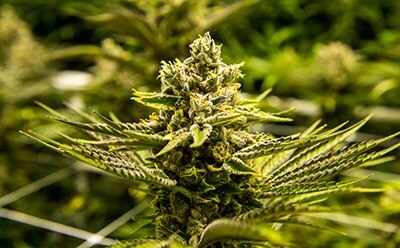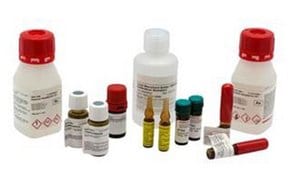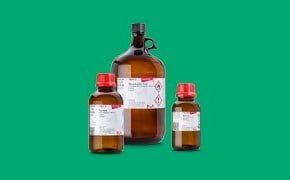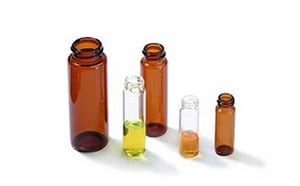Pesticides and Mycotoxins in Cannabis/Hemp

Cannabis and hemp concentrate products such as edibles, tinctures, extracts, and oils have become widely used in the market. Testing for pesticides and mycotoxins in cannabis products is regulated by a variety of state and national authorities. Pesticides are classified into seven major groups based on the field of use: insecticides, herbicides, fungicides, rodenticides, acaricides, molluscicides, and nematocides. Most pesticides have a negative health impact on humans and the environment, resulting in their restricted use or a total ban. Mycotoxins are highly toxic secondary metabolites of certain fungi and molds that easily contaminate food crops. Accurate methods for identification and quantitation of pesticides and mycotoxins in cannabis are essential for consumer safety.
Featured Categories
Certified Reference Materials: CRMs for forensic, clinical, environmental, pharmaceutical, and food & beverage testing.
Your Solvent Source: Find the right fit with Supelco®, SigmaAldrich®, & SAFC® brands, covering analytical, lab, & biopharmaceutical uses.
We offer a wide selection of autosampler and general-purpose vials, including septa, caps, accessories, amber and clear bottles, headspace vials, polypropylene and TPX vials, center drain vials, and silane-treated vials for special applications.
Browse our Gas Chromatography (GC) units, columns, consumables, and accessories for your analytical GC applications to achieve high performance, maximum productivity, and superior detection sensitivity.
Legal and regulatory framework for Analysis of Pesticides and Mycotoxins
Cannabis is legal in varying degrees for medicinal and/or recreational use in Canada, South Africa, Mexico, and many US states, with many more countries reviewing the legal status of cannabis. In December 2019, the U.S. Environmental Protection Agency (EPA) approved 36 pesticides for use in hemp cultivation.
The application of pesticides is strictly regulated, and their residues in cannabis and hemp products are closely monitored by state regulatory agencies. The number of regulated pesticides that are required to be monitored varies by state, country, and region with limits ranging from 10 ppb to 1 ppm. TThe US Food and Drug Administration (FDA) has a regulatory limit for mycotoxins of 20 ppb in human food and animal feed. Organizations such as AOAC are developing methods requirements for cannabis pesticide analysis
Safety hazards from cannabis contamination
Pesticides are commonly used during cultivation to protect cannabis plants from pests and improve crop yields. Chronic exposure to pesticide residues can pose significant health risks.
In addition to pesticides, the growing conditions for cannabis often provide an ideal environment to produce pathogenic molds and fungi. Storage, transportation, and processing are also favorable to cannabis contamination and can lead to elevated levels of mycotoxins in the product. Mycotoxins, such as the aflatoxins G1, G2, B1, B2, or ochratoxin A, are regarded as immunosuppressive, carcinogenic, neurologically toxic, and hepatotoxic.
As a result, testing for the pesticide and mycotoxins levels in cannabis and hemp is important to ensure consumer safety and quality control.
Methodology for the analysis of Pesticides and Mycotoxins
Common workflows for pesticide and mycotoxin analysis require sample extraction, extract cleanups, standardization & calibration, followed by LC-MS/MS and/or GC-MS/MS analysis for rapid monitoring of pesticides and mycotoxins in cannabis and hemp.
Sample preparation for pesticide and mycotoxin analysis
Analysis of pesticide and mycotoxin residues in cannabis have proven challenging because of the complex matrix composition of oils, carbohydrates, resins, terpenes, and cannabinoids. Spectral data of pesticide residues show substantial interferences from coextracted matrix components. The complex matrix also leads to ion suppression causing inconsistencies in the results.
Common sample preparation methods for the isolation of pesticides and mycotoxins from cannabis products involve solvent extraction followed by dilution. QuEChERS and solid phase extraction (SPE) are employed as an extract clean-up step to isolate the analytes of interest and separate them from matrix constituents. QuEChERS has been adopted in the European standard for multi-residue analysis (EN 15662) and the AOAC method. An updated version of QuEChERS, known as QuEChERSER mega-method, has been found effective in the analysis of a broad range of pesticides in hemp matrices. Other approaches include liquid-liquid extraction (LLE), solid-phase microextraction (SPME), solid–liquid extraction (SLE), and dispersive solid phase extraction (DSPE). Matrix effects can also be effectively eliminated by increasing the dilution factor varying from 10- to 100-fold. A dilution factor of 15 is enough to eliminate most of the matrix effects and reduce signal suppression.
Preparation of calibration standards
The use of accurate reference standards is critical to the accuracy of analytical results for calibration and quantitation. Certified Reference Materials (CRMs) manufactured according to ISO17034 provide accuracy, measurement uncertainty and traceability and are required in ISO17025 accredited testing laboratories. Calibration curves can be prepared in either a blank matrix extract, pure solvent or by “spiking” plant material with a pesticide working solution. Pesticide calibration curve concentrations should be tailored to the detection or reporting limits of the analyte and may use standards and mixes of lower or higher concentration. Reference standards are also used to prepare controls, system suitability and to evaluate matrix suppression, enhancement, and extraction recovery.
Pesticide and Mycotoxin analysis using LC-MS/MS and GC-MS/MS methods
LC-MS/MS is the method of choice for pesticide and mycotoxin analysis with superior selectivity and sensitivity, especially for pesticide and mycotoxin residues with different polarities and molecular weights in complex matrices.
GC-MS/MS is a selective and sensitive method for volatile and hydrophobic pesticides such as organophosphates and organochlorines. The use of analyte protectants can reduce adverse matrix-related effects and derivatization can improve detection and method sensitivity.
A combination of both GC-MS/MS and LC-MS/MS is used for multi-residue pesticide and mycotoxin analysis. Tandem quadrupole MS offers high sensitivity and selectivity for simultaneous analysis of hundreds of pesticides at low ng/g (ppb) levels in a single analysis.
Visit our document search for data sheets, certificates and technical documentation.
Related Articles
- Reference materials, standards and certified reference materials are critical for analytical testing. We can help you to choose the ideal reference material for your application, whether you are using reference materials for calibration or quantitative analysis.
- Separation of various pyrazines and sulfur compounds including carbon disulfide and dimethyl disulfide.
- Cannabis testing regulations include analysis of purity, potency, and contaminants. Learn more about analysis of cannabis for pesticides, mycotoxins, and pyrethrins registered in California by LC-MS/MS and GC-MS/MS Using Ascentis® Express Biphenyl and SLB®-5ms Columns
- Complete workflow for cannabis flower pesticide testing using LC-MS/MS and GC-MS/MS ensures product safety.
- ISO-certified cannabinoid CRMs, THC and THCA, available as single components or mixes, for accurate potency testing.
- See All (7)
Related Protocols
- An article regarding A New GC-MS Method for Mycotoxin Analysis Using 13C-marked Mycotoxin Derivatives from Sigma-Aldrich.com
- QuEChERS method for pesticide residue analysis requires only small quantities of solvent and is capable of generating recoveries of 70-120% with RSDs <5% for a wide range of compounds.
- solution, 2 μg/mL in acetonitrile, analytical standard
- Karl Fischer titration offers accurate water content determination in hemp samples compared to the loss on drying method.
- See All (2)
Find More Articles and Protocols
How Can We Help
In case of any questions, please submit a customer support request
or talk to our customer service team:
Email custserv@sial.com
or call +1 (800) 244-1173
Additional Support
- Calculators & Apps
Web Toolbox - science research tools and resources for analytical chemistry, life science, chemical synthesis and materials science.
- Customer Support Request
Customer support including help with orders, products, accounts, and website technical issues.
- FAQ
Explore our Frequently Asked Questions for answers to commonly asked questions about our products and services.
To continue reading please sign in or create an account.
Don't Have An Account?



